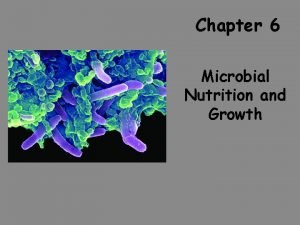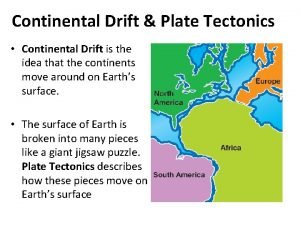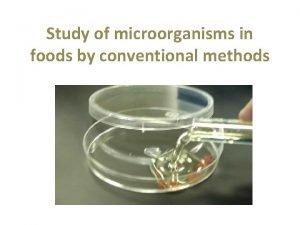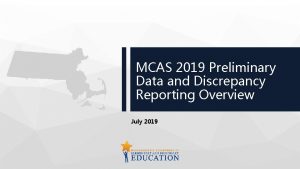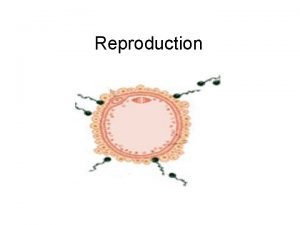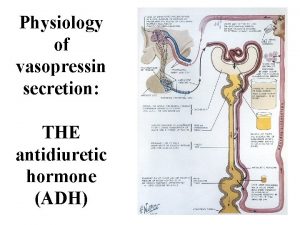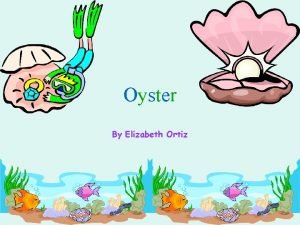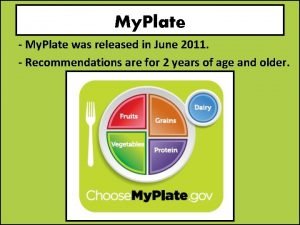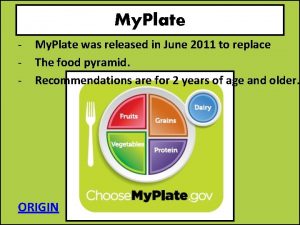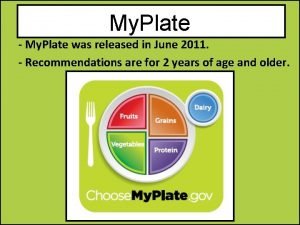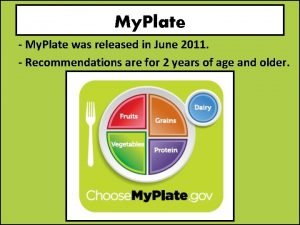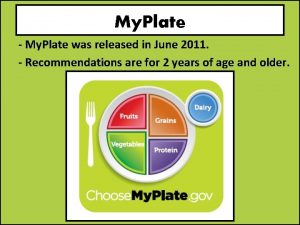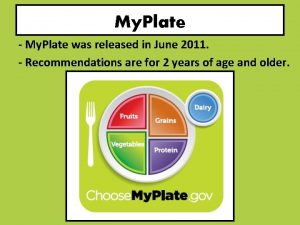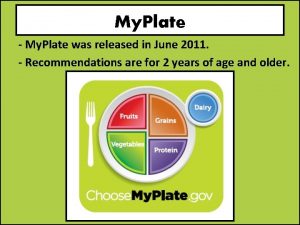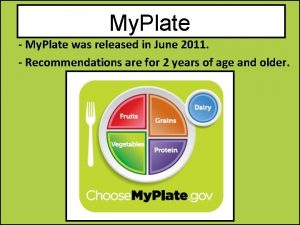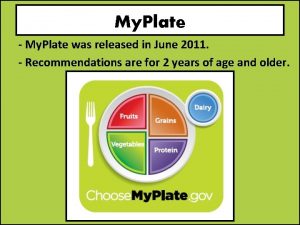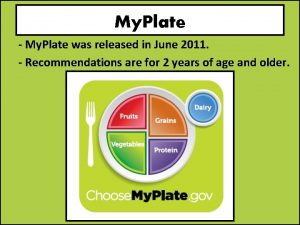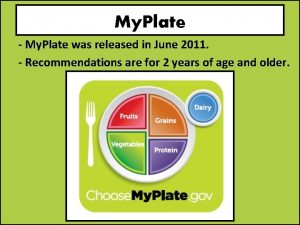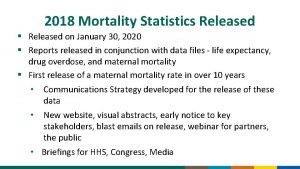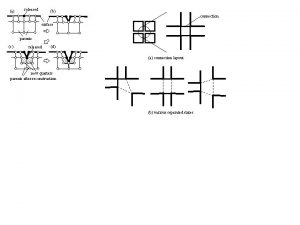My Plate My Plate was released in June

















- Slides: 17

My. Plate - My. Plate was released in June 2011. - Recommendations are for 2 years of age and older.

Fruits Group 1. Use fruits as snacks, salads or desserts. 2. Choose whole or cut up fruits more often than fruit juice. Key Consumer Message: Make half your plate fruits and vegetables. Boys 9 -13 1 ½ c. daily Boys 14 -18 2 c. daily Girls 9 -18 1 ½ c. daily

Fruits • Main Nutrients: Vitamin C-Helps heal cuts and wounds and keeps gums healthy Potassium- Helps maintain blood pressure- and works with sodium to maintain fluid balance in the body

Vegetables Group 1. Choose fresh, frozen, canned or dried. 2. Eat red, orange and dark green vegetables. Key Consumer Message: Make half your plate fruits and vegetables. Boys 9 -13 Boys 14 -18 Girls 9 -13 Girls 14 -18 2 ½ c. daily 3 c. daily 2 ½ c. daily

Vegetables Main Nutrients • Vitamin A- Keeps eyes and skin healthy • Potassium- works with sodium to help maintain fluid balance in the body

Protein Group 1. Choose a variety of different protein sources. 2. In place of some meat and poultry, choose 8 oz. seafood per week. 3. Try grilling, broiling, poaching or roasting. Key Consumer Message: Keep meat and poultry portions small and lean. Boys 9 -13 5 oz. daily Boys 14 -18 6 ½ oz. daily Girls 9 -18 5 oz. daily

Protein foods • Complete- Meat, poultry, seafood, eggs • Incomplete- beans, soy beans, peas, nuts, seeds The incomplete protein foods become complete when used with grains.

Protein Main nutrients • Protein-functions as building blocks for bones, muscles, cartilage. • Iron- used to carry oxygen in the blood

Grains Group 1. Choose 100% whole grain cereals breads, crackers, rice and pasta. (corn, oatmeal etc. ) 2. Check the ingredients list on food packages to find whole grain foods. Key Consumer Message: Boys 9 -13 Boys 14 -18 Make half your grains Girls 9 -13 whole grains. Grains Whole Grains 6 oz. daily 3 oz. daily 8 oz. daily 4 oz. daily 5 oz. daily 2. 5 oz. daily Girls 14 -18 6 oz. daily 3 oz. daily

Grains Main Nutrients • Carbohydrates- Energy • B Vitamins- helps the body release energy from protein, fat, carbohydrates

Dietary FIBER • Fiber consists of plant material that doesn’t break down when you digest your food. • Fiber helps your body eliminate wastes. • Found in whole grains, fruits, and vegetables.

Dairy Group 1. Low-fat or fat-free dairy products have the same amount of calcium and other essential nutrients as whole milk, but less fat and calories. Key Consumer Message: Switch to low-fat or fatfree milk. Get your calcium rich foods. Boys 9 -18 3 c. daily Girls 9 -18 3 c. daily

Dairy Main nutrients • Calcium- For building bones and teeth and bone mass • Milk and soymilk are fortified with Vitamin D which is essential for maintaining proper levels of calcium • (milk, cottage cheese, yogurt)

Dietary Guidelines (Key messages) • Balancing Calories 1. Enjoy your food, but eat less. 2. Avoid oversized portions 3. Exercise – 60 minutes of physical activity each day

• Foods to Reduce 1. Compare sodium in foods like soup, bread, frozen meals, and choose the foods with lower numbers. 2. Drink water instead of sugary drinks 3. Reduce the intake of “empty calories” or low nutrient dense foods. Use salad dressings/mayonnaise sparingly.

• Food to Increase 1. Make half your plate fruits and vegetables. 2. Make half your grains whole. 3. Switch to fat-free or lowfat 1% milk/products.

• Keep Food SAFE
 Divergent boundary oreo
Divergent boundary oreo Isolation of pure cultures
Isolation of pure cultures Pour plate vs streak plate
Pour plate vs streak plate A denser oceanic plate collides with a continental plate
A denser oceanic plate collides with a continental plate Spread plate vs pour plate
Spread plate vs pour plate Oxytocin action
Oxytocin action Ricas writing rubric
Ricas writing rubric Grade 3 portfolio
Grade 3 portfolio Time based authoring tools
Time based authoring tools Specific latent heat equation
Specific latent heat equation Testnav mcas
Testnav mcas Heat released
Heat released What are gonads?
What are gonads? Adh released from
Adh released from Scientific name for an oyster
Scientific name for an oyster Pisa released items mathematics
Pisa released items mathematics Gradecscope
Gradecscope Designer released now multimedia authoring system
Designer released now multimedia authoring system


